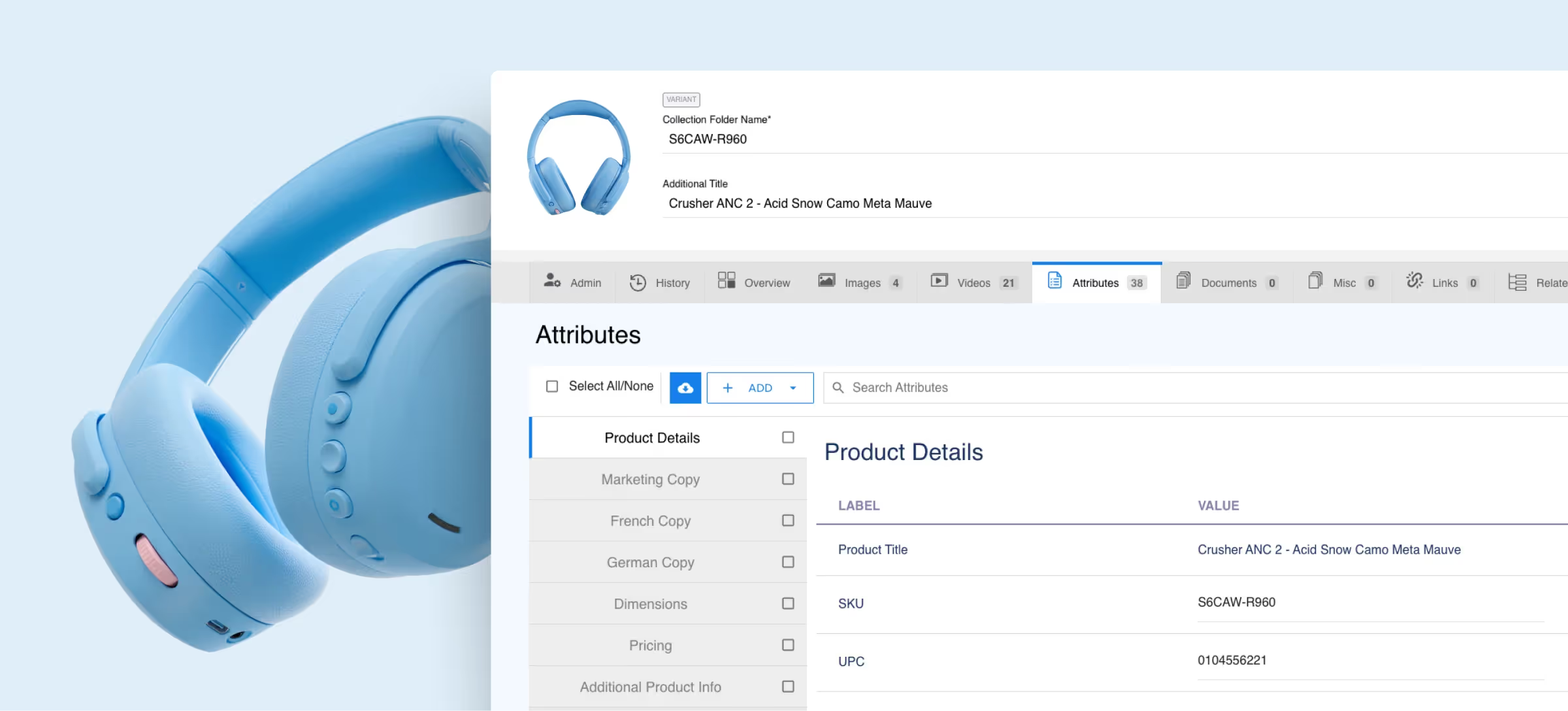Localized Fulfillment Strategy for US Brand Expansion
Expand your US brand internationally. Learn localized fulfillment strategies for efficient delivery, cost savings, improved customer experience, and optimal supply chain ROI.
What Is Localized Fulfillment Strategy for US Brand Expansion?
Localized fulfillment is essentially the strategic positioning of inventory and distribution operations closer to target customers in international markets.
Through global expansion, brands can attract new customers and increase their market share, making them veritable powerhouses. But to do this effectively, US brands need to have an international presence so customers across the globe can purchase, receive, and return products as seamlessly as if they ordered it locally. As a result, brands looking to expand internationally ought to consider a localized fulfillment strategy. This allows them to expand operations from domestic retailers to global ecommerce leaders through reduced shipping times, while keeping costs low and enhancing customer experience.
Amazon Prime introduced two day shipping in 2005, but this perk has become more of an expectation than novelty in the last few years. Forty-three percent of consumers consider speed of delivery one of the most important factors when completing a purchase. Because international shipping inherently causes delays (or additional costs to speed up delivery), it’s important for US brands to set up fulfillment centers in local jurisdictions to make shipping quicker. Without this, sustainable international growth is extremely difficult and full of bottlenecks.
While local fulfillment centers are key, it’s also important to meet marketplace compliance requirements and local customer service to keep customers happy. This is why a comprehensive fulfillment strategy is essential for US brand expansion.
Strategic Benefits of Localized Fulfillment for US Brands
Delivery speed optimization
Setting up warehouses locally makes it easier for customers to get their orders as quickly and seamlessly as they’ve come to expect. Enabling local fulfillment helps keep shipping costs low and delivery times fast, reducing the likelihood of cart abandonment.
Cost structure transformation
International shipping fees can prevent customers from making more and repeat purchases. Localized fulfillment centers enable you to eliminate international shipping fees, reduce customs delays, and avoid surprise duties — which can increase costs up to 40%.
Market penetration enhancement
Gain customer trust and increase conversion rates with recognizable domestic shipping options and familiar return policies. This creates trust signals to consumers and makes them more likely to complete their purchase.
Competitive positioning
Multi-week delivery times diminish your competitive advantage, as 38% of customers stop buying from brands with a negative delivery experience. Localized fulfillment enables same- and next-day delivery options that allows US brands to compete globally in target markets.
Customer experience excellence
Long wait times in international shipping and returns make it hard to satisfy the consumer who’s grown used to instant gratification. Brands with localized fulfillment are more likely to provide an excellent customer experience and leave a lasting brand impression.
Scalability foundation
Scaling into new markets can be challenging without the right foundation. Localized fulfillment empowers US brands to build infrastructure that supports rapid volume growth without increasing operational complexity or worsening customer service challenges.
Risk mitigation
By diversifying supply chain dependencies, brands reduce exposure to trade disruptions, tariff changes, and cross-border regulatory modifications. This allows them to be more flexible when fulfilling orders from customers across the globe.
Implementation Models for Localized Fulfillment
Regional hub strategy
Establish regional hubs in strategic locations to serve as many markets as possible. This provides the double benefit of reducing your investment in infrastructure while maximizing service locales.
Market-specific centers
Determine which markets make the most strategic sense for your business goals and establish dedicated warehouses there. US brands may be more likely to maximize inventory investments in high-volume markets like the UK, Germany, Australia, and Canada.
Hybrid cross-dock models
Optimize both cost and speed with a hybrid model that combines both bulk international shipping or local last-mile distribution. This not only increases fulfillment flexibility, but also enhances supply chain efficiency.
Third-party partnership
Rather than taking on fulfillment requirements as a singular brand, collaborate with established 3PL providers who offer multi-country networks, advanced technology integration, and regulatory expertise to streamline cross-border fulfillment.
Technology-enabled distribution
Gone are the days of being unsure of what’s in your inventory and how long until you run out. By implementing AI-powered inventory allocation systems, you can predict regional demand and optimize stock positioning across global fulfillment networks.
Seasonal optimization
Since each market has its own seasonal patterns, deploy flexible capacity management that adjusts inventory positioning based on promotional calendars and market-specific demand cycles.
As the #1 global ecommerce accelerator, Pattern has the systems and technology you need to make fulfillment and logistics a breeze. Get to your customers first with faster, more accurate product delivery across the globe.
Key Markets and Expansion Opportunities
- Canada expansion: As one of the closest neighbors to the US, Canada expansion presents tons of opportunities for US brands to maximize low-friction international growth with potential for one-day delivery to major markets.
- European Union markets: EU markets allow US brands to gain access to over 450 million consumers through strategically placed fulfillment hubs, allowing them to navigate VAT regulations, customers unions, and marketplace requirements across multiple countries.
- UK market dynamics: Meet post-Brexit requirements and capitalize on mature infrastructure by establishing dedicated operations in UK markets that have high customer spending power.
- Asia-Pacific opportunities: Australia, Japan, and Singapore are strategic entry points for APAC expansion. Expanding to these markets allows you to emphasize premium positioning and maintain quality service expectations.
- Latin American growth: Expanding into Latin American markets can bring its own unique set of logistical challenges, but US-based brands can capture emerging market opportunities with localized fulfillment strategies.
- Marketplace-specific expansion: Rather than focusing on specific markets, you can optimize expansion for specific marketplaces in these markets like Amazon Europe, Walmart International, and regional marketplaces like Tmall and Mercado Libre.
- Strategic prioritization: Instead of expanding all at once, expand your market presence based on demand indicators, competitive landscape, regulatory complexity, and infrastructure requirements for a phased expansion approach.
Global expansion doesn’t have to come with added complexity. Dynamically expand your business across borders with strategic opportunities and accurate insights in the right markets with Pattern.
Technology and Operations Excellence
Inventory management systems
With real-time allocation technology, US-based brand leaders can track stock across multiple regions, predict demand patterns, and automatically replenish stock based on sales patterns and velocity.
Order routing intelligence
Get rid of the guesswork and use sophisticated algorithms to make strategic decisions about optimal fulfillment locations. Calculate factors like inventory availability, shipping costs, and delivery speed requirements to optimize fulfillment and keep customers happy.
Customs and compliance automation
To effectively optimize localized fulfillment, integrate existing systems with ones that allow you to handle complexities like VAT registration, duty calculations, documentation requirements, and regulatory compliance across multiple jurisdictions.
Multi-channel synchronization
Improve visibility by connecting and synchronizing sales channels across international markets. Use multi-channel synchronization to track real-time updates and maintain consistent inventory visibility across DTC (direct to consumer) websites, marketplace platforms, and retail channels.
Performance analytics
With the right technology, you can access comprehensive reporting on regional performance, cost optimization opportunities, customer satisfaction metrics, and expansion ROI measurements. This allows you to fine-tune operations even more and scale international fulfillment.
Quality control systems
Ensure consistent brand experience regardless of fulfillment locations. Implement standardized processes through automated quality checks and performance monitoring so your customers receive the same high-quality products regardless of location.
Returns management
Establish localized returns processing that handles inspections, restocking, and customer communication. Use technology to optimize inventory recovery and keep your customers happy.
Financial Modeling and ROI Optimization
Calculate ROI and justify infrastructure and inventory investment to stakeholders with these metrics:
Cost-benefit analysis
Perform a cost-benefit analysis to calculate the feasibility of a localized fulfillment strategy. Start by comparing total landed costs (shipping duties, taxes, customer acquisition, etc.) between centralized US fulfillment and localized international distribution.
Measure revenue impact
Assess how localized fulfillment strategies impact your revenue. Track and measure improvements in conversion rates, increases in average order value, and boosts to customer lifetime value that result from faster delivery and local presence.
Market penetration metrics
Evaluate expansion effectiveness and optimization opportunities by monitoring metrics like customer acquisition costs, retention rates, and market share growth in target regions. This helps provide a clear picture of how much of the potential market you’ve captured (compared to pre-expansion).
Operational efficiency gains
Calculate how much time a localized fulfillment strategy will save your brand on order processing, lowering stockouts and overstocking, and improving customer service. This should provide insight into cost reduction and increases to your bottom line.
Break-even timeline
The quicker you get out of the red, the quicker you see a return on investment. Calculate the payback periods by measuring implementation costs against incremental revenue and establishing realistic expectations for investment recovery.
Scaling economics
Make a compelling argument for sustained expansion by showing how fixed infrastructure costs decrease per unit as volume grows. The numbers make a strong case for further market development and scaling brand expansion.
Risk-adjusted returns
Create ROI models that account for market volatility, regulatory changes, and competitive responses. This ensures robust financial planning and decision-making.
Overcoming Common Implementation Challenges
Some common implementation challenges of a localized fulfillment strategy include:
- Inventory allocation complexity
- Regulatory compliance navigation
- Technology integration challenges
- Quality control consistency
- Customer service coordination
- Cost management
- Scalability planning
One of the biggest challenges in allocating inventory to different markets and systems. Even when operating in a single market, it can be difficult to allocate inventory, and brands that don’t have a proper handle on it frequently experience overstocks or stockouts. But with sophisticated forecast models that balance stock availability against carrying costs in high-demand markets, you can not only optimize inventory but also maintain brand standards across multiple fulfillment locations.
Additionally, brands can master VAT registration requirements and product compliance standards with the right technology. Use API integrations to ensure that your existing ecommerce systems integrate with localized fulfillment technology so you have an accurate view of how your systems are performing.
Another challenge brands face without a robust localized fulfillment strategy is disjointed customer service. Operating across borders without standardized systems makes it difficult for customers to track orders and connect with support agents that are local to them. Overcome this challenge by establishing local customer support systems that are available in their language and time zones.
You can also manage costs and fulfillment scalability by enabling efficient routing, bulk shipping, and tech automation, and scale efficiently with fulfillment networks. This way, you can accommodate rapid growth without sacrificing service quality.
Future Trends in Localized Fulfillment
The future of global expansion lies in localized fulfillment. Once novel, localized fulfillment will eventually become table stakes, and companies who want to compete internationally will have to eke out a strategy to help them sell across borders.
As technology advances, more brands will lean on advanced machine learning algorithms to predict optimal inventory positioning and automate demand forecasting. Real-time fulfillment network configuration and visibility will provide brands with unprecedented transparency, which will become increasingly essential to keeping pace with the market.
Additionally, as sustainability becomes more important, options that reduce environmental impact will become standard for brands looking to expand beyond domestic retail. This will lead to micro-fulfillment networks that empower faster delivery without increasing your carbon footprint. Autonomous logistics (robot fulfillment services) will also become a go-to tactic for reducing costs while improving speed and accuracy.
Ultimately, localized fulfillment strategies will enable brands to match the preferences of customers across the globe while streamlining operations and profitability.

How Pattern Accelerates Ecommerce Growth and Fulfillment
From packing and pricing to selling and shipping, Pattern helps your brand make an impact. Discover how Pattern accelerates fulfillment so you can strategize globally and deliver locally. Watch the video to learn more.
Book a Strategy Call
Looking for insight on localized fulfillment centers, dynamic forecasting, and expanding your reach? Book a strategy call with the experts in ecommerce acceleration so you can sell efficiently no matter where you are.

Brand Expansion Success Stories
Become the go-to brand at home and abroad. See how ecommerce brands like yours use Pattern to expand their reach to customers in new markets.

Frequently Asked Questions
What should brands look for when purchasing marketplace management tools for international expansion?
When evaluating tools for cross-border market expansion, brands ought to focus on tools that integrate with international marketplaces, enable localization capabilities, streamline inventory management across regions, and offer unified order management.
How do I determine which markets justify localized fulfillment investment?
To determine where localized fulfillment investment makes the most sense, evaluate markets based on order volume, customer acquisition costs, shipping expense reduction potential, and competitive landscape. Generally, markets generating 100+ monthly orders can justify regional fulfillment investment through improved customer experience and conversion rates.
How does localized fulfillment handle returns and customer service?
Regional fulfillment includes local returns processing, inspection, and restocking capabilities. Many providers offer multilingual customer service and local communication to ensure consistent brand experience across all markets and touchpoints.
Can small to medium brands benefit from localized fulfillment strategies?
Yes, through partnerships with established 3PL providers offering shared fulfillment networks. This allows smaller brands to access regional distribution without large infrastructure investments while maintaining operational flexibility and cost efficiency.
What regulatory challenges should I expect with international fulfillment?
Key considerations include VAT registration, product compliance standards, labeling requirements, and import documentation. Experienced fulfillment partners handle regulatory navigation, customs clearance, and compliance monitoring to ensure smooth operations across all markets.


.jpg)










